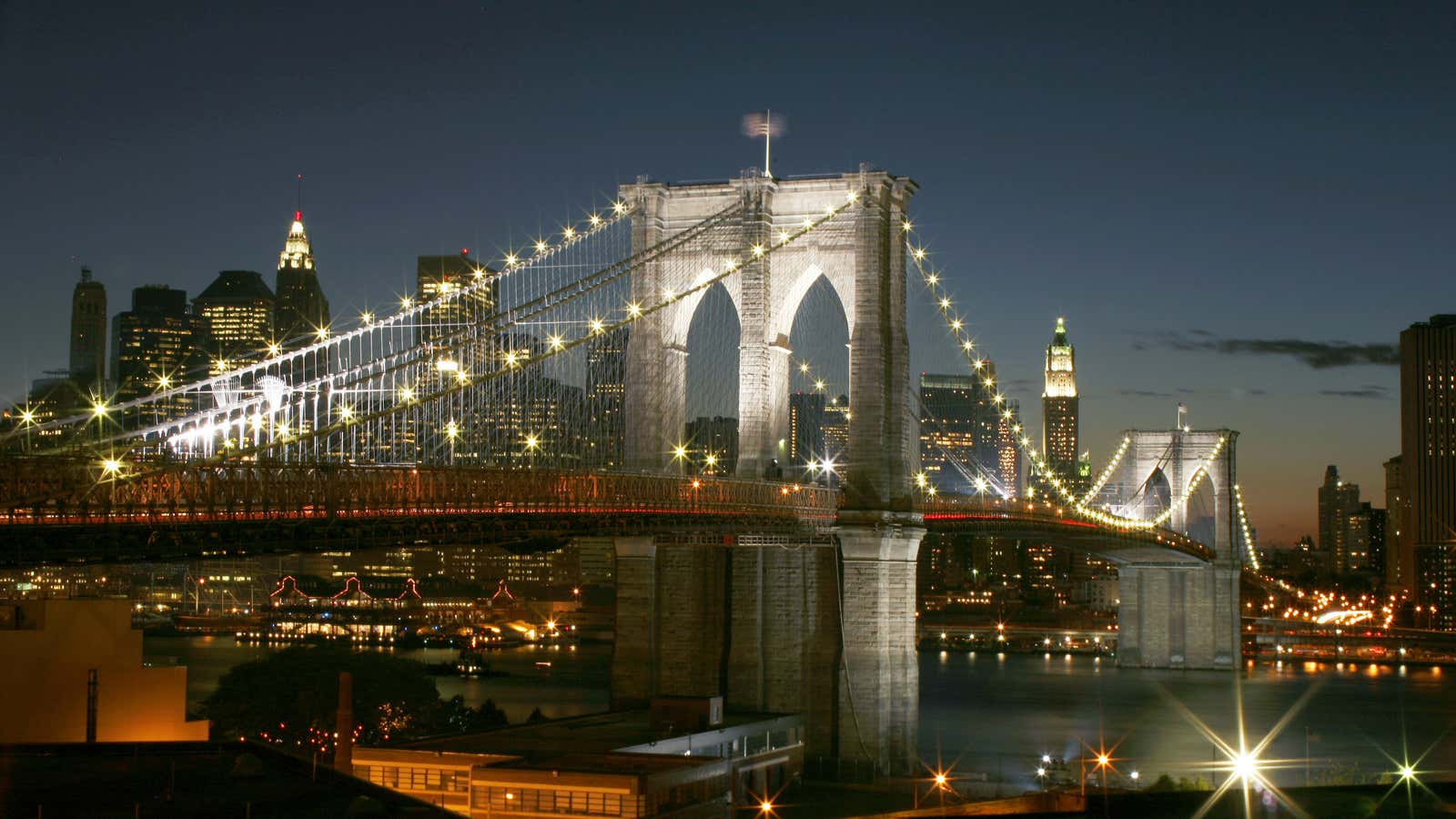It is readily apparent to any New Yorker that the 21st century will belong to Brooklyn. Now we have the labor market data to prove it.
While the borough of Manhattan remains the locus of economic activity in New York City, Brooklyn is by far the fastest-growing in terms of where people make their money. From 2001 to 2015, the total wages of people working in Brooklyn—they don’t necessarily live there—rose by 40% from $16.5 billion to $23.2 billion, in 2015 dollars.
These data come from the Quarterly Census of Employment and Wages collected by the US Bureau of Labor Statistics, and represent nearly all wage income from private sector employees.
What accounts for Brooklyn’s rise?
It’s not that the average worker in Brooklyn is making much more money—in fact, average weekly wages have barely changed over this period. The big change is that so many more people now work in the borough. Brooklyn’s annual job creation rate of 2.3% from 2001 to 2015 was almost triple Manhattan’s rate of 0.8%.
Much of Brooklyn’s labor market growth came from areas you might expect from the spiritual home of the hipster: Art and food. Brooklyn’s population only grew by about 7% during this period—the population growth of each borough was in the range of 5-10%—but the amount of money made by people working in the arts, entertainment, hospitality, and food industries nearly tripled from about $450 million to nearly $1.3 billion (Information on how the Census defines industries can be found here.)
The entertainment and hospitality industries grew across all the boroughs, but far more dramatically in Brooklyn. Led by a gentrification-fueled restaurant boom, and the opening of the Barclays Center in 2012, a world-class arena, Brooklyn became a going-out destination.
The following chart shows the growth in total wages from arts, entertainment, hospitality, and food jobs from 2001 to 2015. (Sorry Staten Islanders, we are going to ignore you from here on out.)
Though Brooklyn saw the fastest growth in wages for entertainment and hospitality jobs, the industry that grew the most in the borough in absolute terms was health care and social assistance. This was not special to Brooklyn; health care and social assistance had the largest aggregate wage increase in each borough besides Manhattan (where it was 6th).
Economically, Brooklyn has thrived in the 21st century. Not everyone is thrilled with the changes. Housing prices have skyrocketed, and many people have been priced out of the borough—struggles that are typical of the US’s booming cities. As an increasing amount of economic activity occurs in the borough, the great challenge for Brooklyn’s leaders will be making sure that all its residents have access to that wealth.
